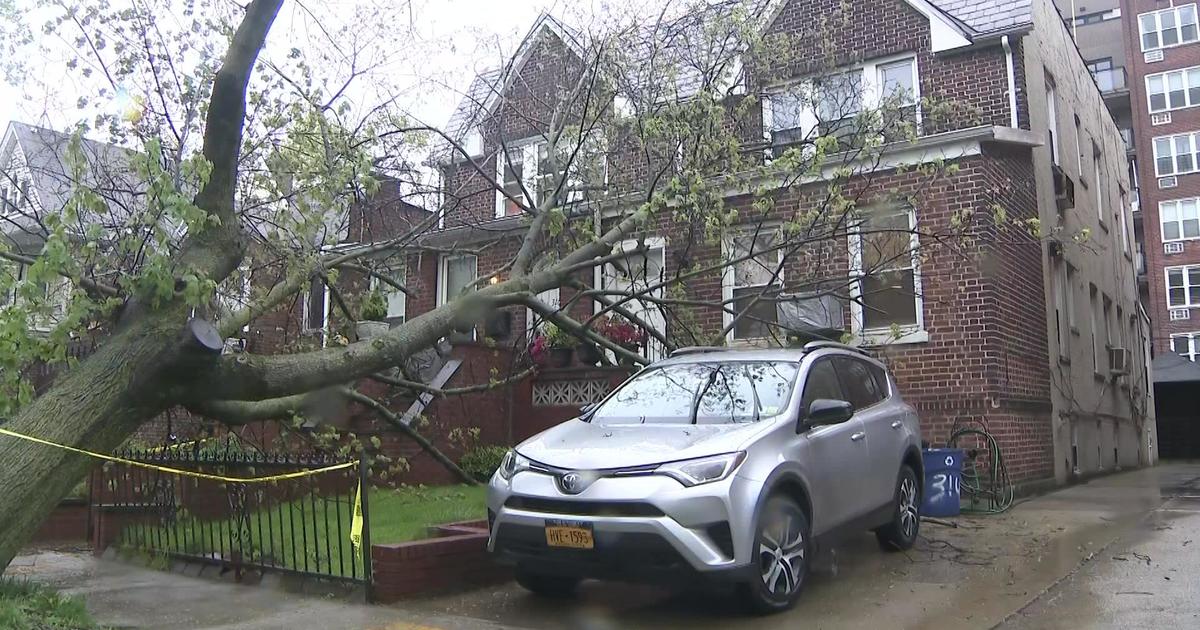Good News For Heating Bills - Warmer Winter Ahead
NEW YORK (AP / WCBS 880) - Most U.S. homeowners should get some relief on their heating bills this winter.
LISTEN: WCBS 880's Kelly Waldron with a New Jersey Climatologist
The price of natural gas, the fuel that supplies 70 percent of the nation's heat, is relatively low for the second year in a row, and falling. Also, forecasters predict a warmer winter across much of the country - especially in the Southeast, which suffered through a historically cold winter last year.
But those who rely on heating oil, and residents of the Pacific Northwest, may need to bundle up. Unlike natural gas, crude oil prices have risen sharply from their recession lows, pushing up the price of heating oil 16 percent over last year. And forecasters are predicting a cold and snowy winter in the Northwest.
Energy prices of all types rose sharply in the years leading up to the financial crisis, then all collapsed with the economy. Even as the economy has started to recover, natural gas prices have stayed low because supplies are ample and growing, says Jen Snyder, head of North American gas research at the consulting and analysis firm Wood Mackenzie.
Last winter the nationwide average cost to heat a home from November to March was $978, down 6 percent from the previous winter, according to Mark Wolfe, executive director of the National Energy Assistance Directors' Association.
Analysts predict that won't change much this year. They say natural gas and electricity prices will stay relatively steady even if the weather turns colder than expected.
"We are so well supplied that it's less likely there will be a spike,'' says Ed Morse, head of commodities research at Credit Suisse.
Heating oil, which is derived from crude and accounts for 17 percent of home heating, mostly in the Northeast, is another matter. Crude oil prices have risen because traders expect increasing demand from China and Asia and because the U.S. dollar has been weakening. A weaker dollar makes oil, which is priced in dollars, look cheaper to all overseas buyers. As they drive up the price of oil, derivative fuels like heating oil become more expensive for Americans.
Also, because heating oil is made along with diesel and jet fuel, increases in demand for those fuels as the economy picks up can make for shortages of heating oil, and therefore higher prices.
The Energy Information Administration, a branch of the U.S. Energy Department, releases its outlook for heating fuel costs on Wednesday.
Forecasters think the most likely place for a colder than normal snap is the Pacific Northwest. Cool ocean temperatures in the Pacific near the equator are creating what meteorologists call a La Nina effect, which generally leads to colder and snowier weather in the Pacific Northwest and the Northern Plains.
Last year the opposite conditions were in place, called El Nino.
La Nina conditions are correlated with warmer weather in the South and East because they allow the jet stream, which brings warmer temperatures, to wander north.
Weather over the arctic can gum up those works, however, and push colder weather south, so forecasters aren't as confident in their predictions for the east as they are for the Northwest.
Still, La Nina makes a repeat of last year's prolonged eastern cold snap only a remote possibility. "It will be difficult to have anything like what happened in the Southeast again this year,'' said Judah Cohen, director of seasonal forecasting for AER, Inc.
Despite mild weather and energy prices, heating assistance officials say requests for help remain high at a time of stubbornly high unemployment.
"Even though the forecasters might be calling for a not-so-chilly winter, our volume hasn't slowed down,'' said Janet Joseph, executive director of Heating Energy Assistance Team, a non-profit organization that directs private contributions to needy families in Georgia. "In fact, it's increased. We're seeing people who may not have asked for help before.''
Wolfe said winter is particularly tough for those who rely on heating oil because their bill comes in one or two big lumps when it comes time to fill the family oil tank. While $1,000 over a year is not normally a huge burden, a $500 monthly bill can be.
Because heating oil is often distributed by small local delivery companies, there are not as many flexible payment programs like the ones offered by large gas utilities. And the area of the country that relies most heavily on oil heat, the Northeast, is one of the nation's coldest. Average prices in Maine, for example, can be closer to $2,500 a year than to the national average of about
$1,000, says Wolfe.
John Huber, president of the National Oilheat Research Alliance, an industry group, said high prices for heating oil are hurting both consumers and delivery companies. While in the past high prices have led customers to install new, more efficient boilers, now customers don't have the extra money to upgrade.
The average retail price for heating oil is about $2.93 per gallon, according to the Energy Information Administration, 41 cents above prices last year at this time. Early October is typically when oil prices are highest during the year, so analysts expect them to gradually fall as winter wanes.
Natural gas prices are $3.52 per thousand cubic feet and are expected to creep just above $4, on average, as the weather turns colder.
While home heating costs are low compared with recent history, they are still 23 percent higher than they were five years ago. "It's not enough to sink a middle class family but it's more alarming to them,'' said Wolfe.
Last year a $5.1 billion federal heating assistance program helped 8.8 million families. There are proposals for similar programs in congress now, a $5.1 billion proposal in the House and a $3.3 billion plan in the Senate.
(Copyright 2010 by The Associated Press. All Rights Reserved.)



